Marton
The word “Marton” was first seen spelled as such in the year 1297
Here are several links about Marton, which include the history, geography and education of Great and Little Marton.
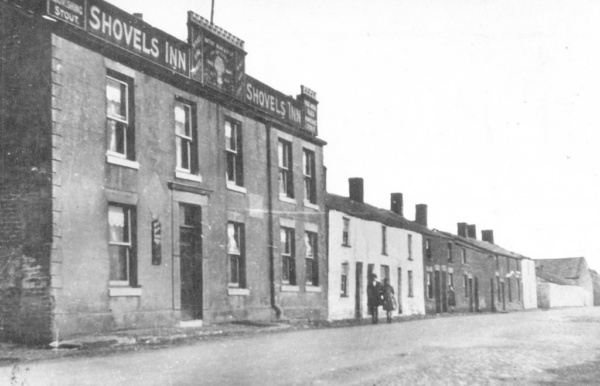
Marton Folds and the Shovels Inn c.1918
The Shovels Inn, also called ‘The Malt Shovel’ or ‘Two Shovels’, was on Common Edge Lane in Marton, previously known as Moss Edge Lane.
The original Shovels Inn, as seen here, was demolished in the mid 1950’s for road widening and to make way for the present pub of the same name which was built to the rear and alongside the outdated watering hole
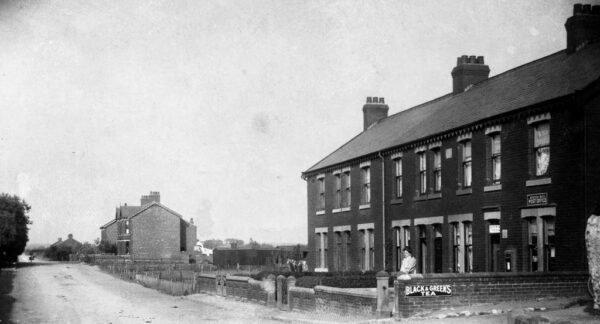
Pleasant View, Marton Moss, School Road
The terrace was built in 1900. Marton Moss Post Office to the right end of the terrace.
Church View cottages on Preston Old Road were built in 1878, opposite St Paul’s Church
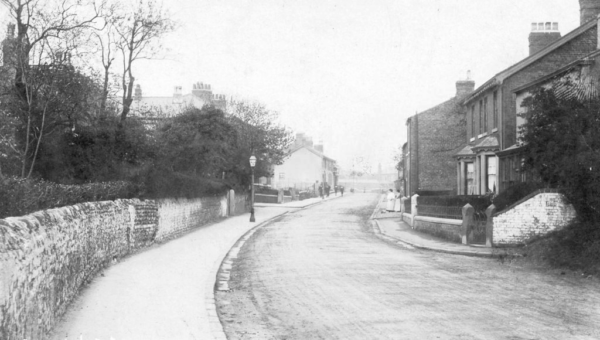
Preston Road, Marton
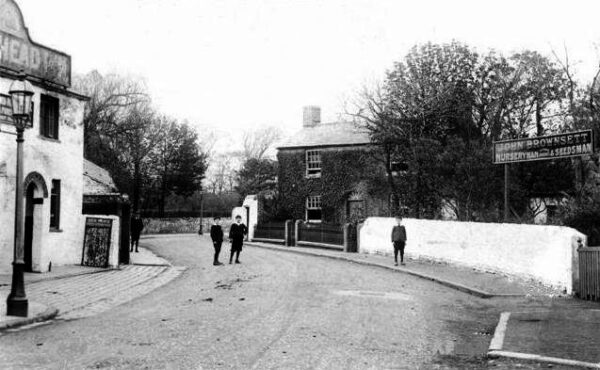
Preston Road, Marton
Boar’s Head Inn to the left and John Brownsett, Seedsman to the right
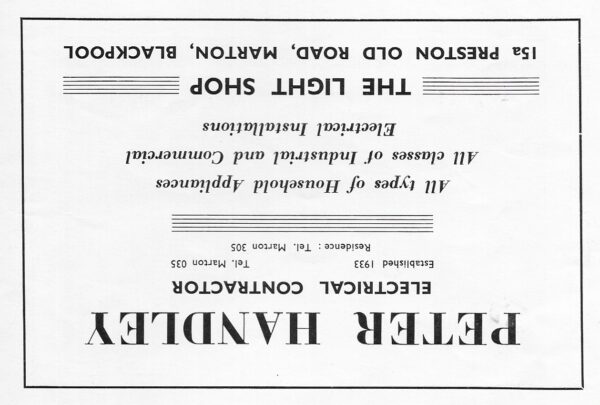
The Light Shop – 1956
Preston Old Road
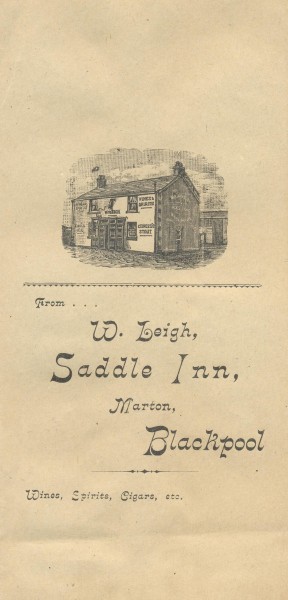
A paper bag to hold a bottle sold at The Saddle public house on Whitegate Drive, Marton. c1900
Opposite the Saddle Inn in 1854 was Hill’s Farm, with Green Farm slightly further south towards Great Marton windmill
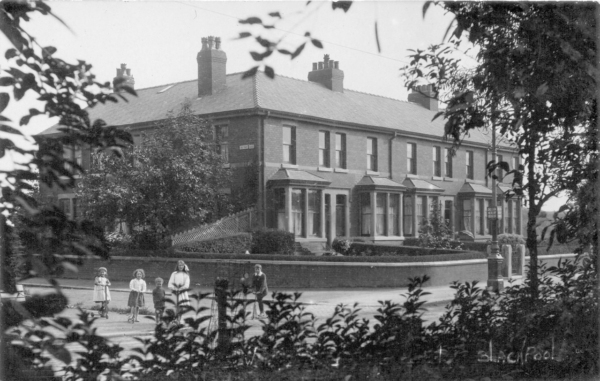
Waterloo Road with the junction of Rectory Road
During 1900, John “Scrap” Boardman built a row of nine terraced houses on Hawes Side Lane. The last house held a baker and confectioner’s shop, and next door, from 1907, was a small Police Station.
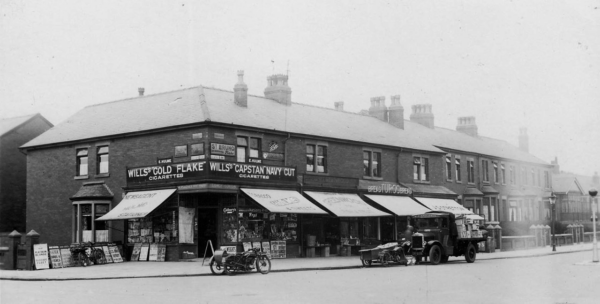
Crossland Road, Rectory Road and Vicarage Lane junction. The corner shop belongs to E.Hulme. The billboard for the Rendezvous Cinema advertises “Platinum Blonde”, a Jean Harlow film dating this card to 1931/32. Adjacent shops are Greenwoods (fishmonger and fruiterer), and next but one, J D Stretton. The lorry belongs to W.B. Anderson & Sons
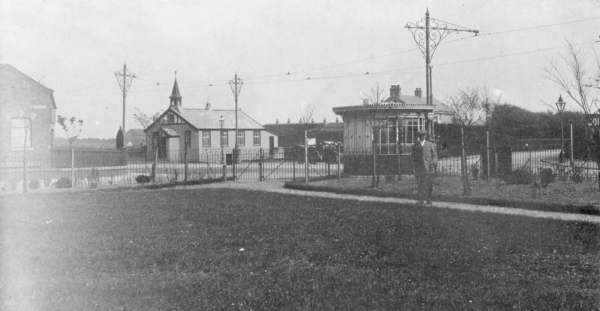
Hawes Side – Waterloo Road
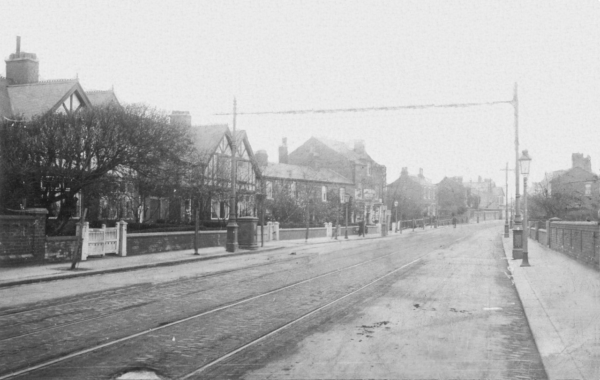
Waterloo Road looking east from Spen Corner
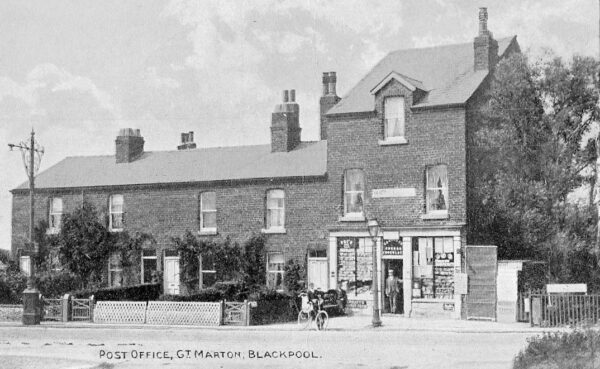
Post Office, Great Marton, Waterloo Road
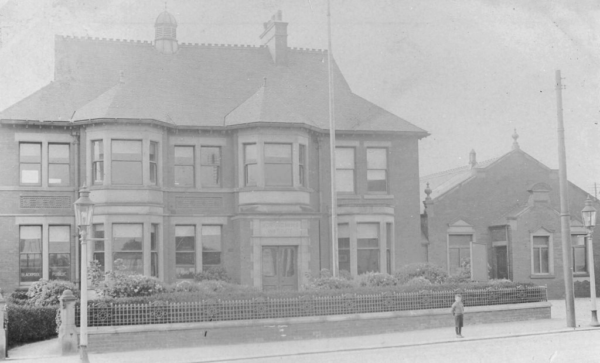
Marton Working Men’s Club and Institute was founded to give the people of the Marton district a place for ‘recreation and mental improvement’. The foundation stone was laid on 27th April 1895 by a 95 year old Mr J Parrot, whose £500 donation greatly aided the Committee’s work
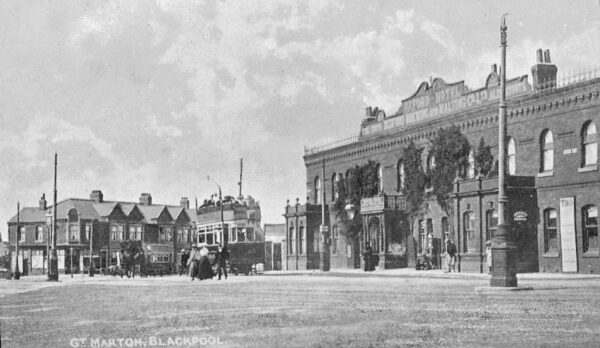
Seen here on a postcard dated 1908. The Oxford Hotel opposite Marton Institute
To the left of this picture can be seen a row of shops and houses called Oxford Place, which were built at the corner of Waterloo Road during 1900.
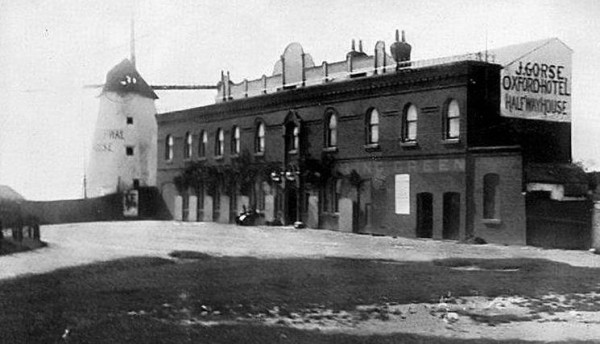
In 1876 The Oxford Hotel and Pleasure Gardens were built next to the Great Marton Mill on the site of the demolished Mill Inn.
John Gregson built numbers 1 and 3 Bank Road, Marton. He then sold number 1 to the London City and Midland Bank (now HSBC). Bank road was originally called Flag Causeway after the farm of the same name, and is now called Newhouse Road.
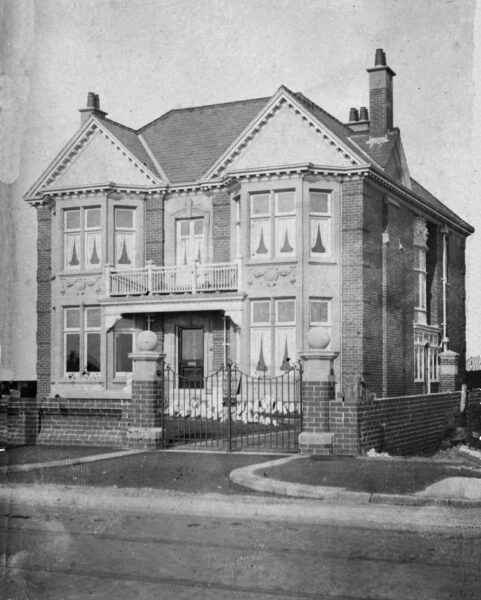
He built this house at 668 Lytham Road, Blackpool.
Demolished c.2006 and replaced with a block of apartments
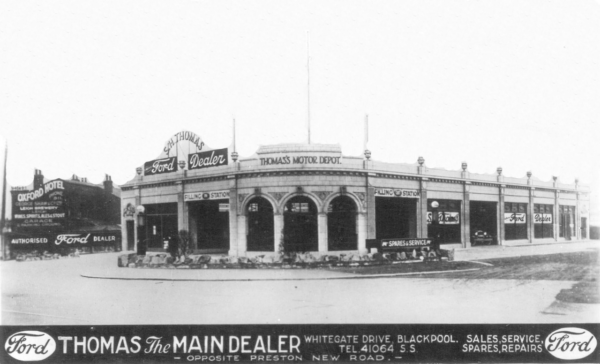
Thomas Motors Depot at Oxford Square. Dates from the late 1920’s. A single storey building with a track to the right which is now Park Road. The space to the left was filled by the Oxford Cinema in 1938.
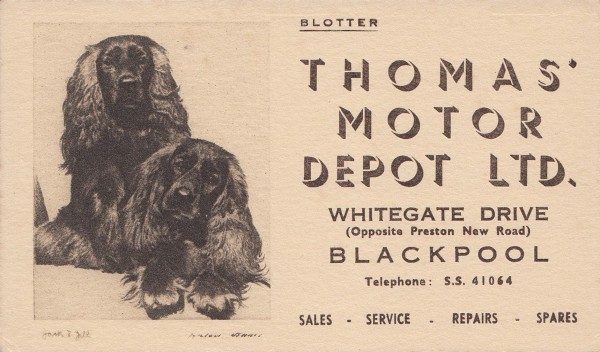
After the cinema closed in 1960, it was taken over by Thomas Motors
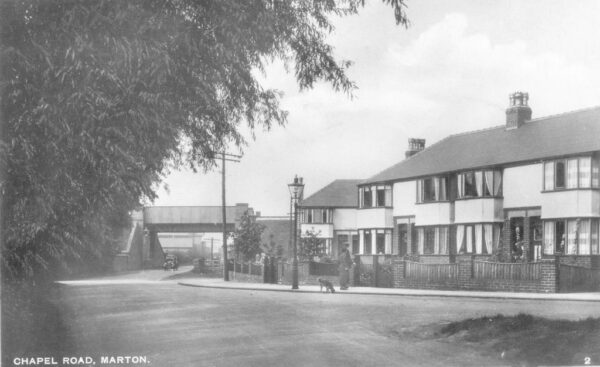
Chapel Road – 1943
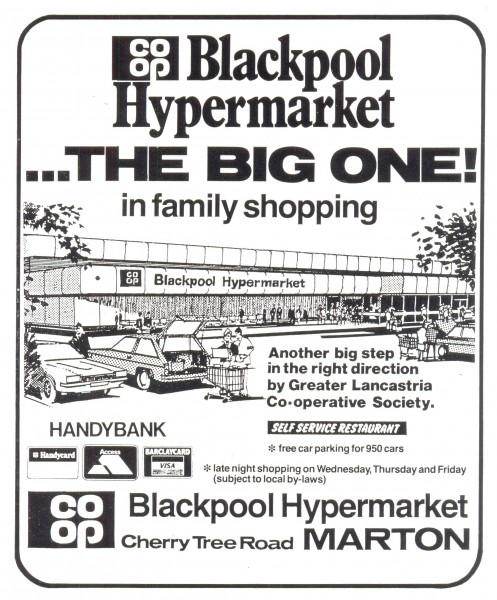
View other Marton

